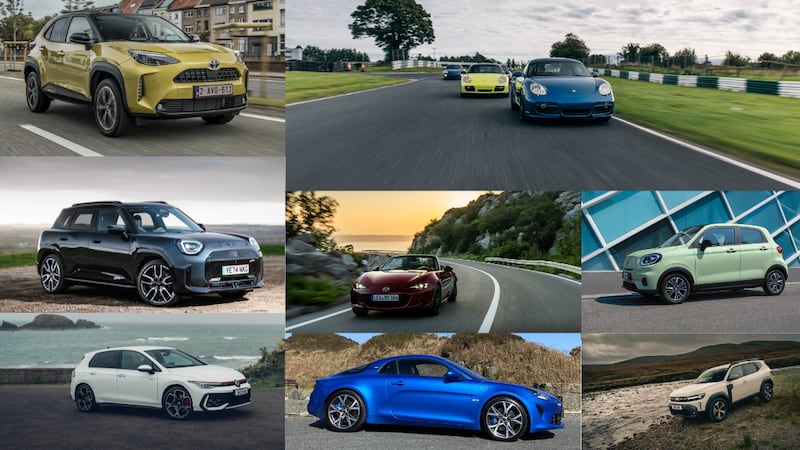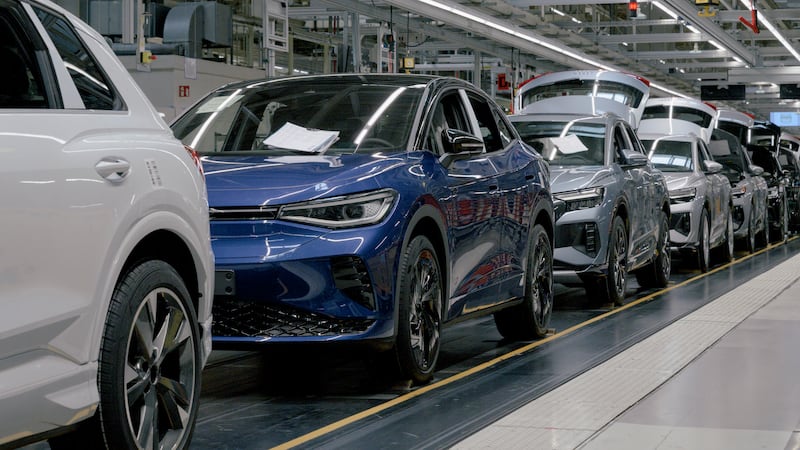It’s not often we opt for the back seat in a test drive but in this case it was mandatory. There are two types of buyers for luxury cars: those who drive and those who are driven. For the latter cohort, it begins before you even your bum gets near the leather seat. On the new Lexus LS, when fitted with air suspension, the car rises by 40mm when it is unlocked, to make entry easier. God forfend you’d have to bend. Once the engine starts it lowers again to the regular ride height.
There’s an optional two-seat format for the rear that offers veritable armchairs that would be the envy of any business class airline cabin. Here you get over 1 metre of legroom and a 22-way adjustable seat that can recline up to 48 degrees - apparently the optimum position for watching the entertainment screen fitted to the rear of the front seat. Who knew?
Shiatsu massage
It doesn’t end there, for the seats also come with in-built climate control that monitors your body temperature. It means one passenger can be snuggled up at 24 degrees while an elbow away, the other passenger can enjoy life at a cool 16 degrees.
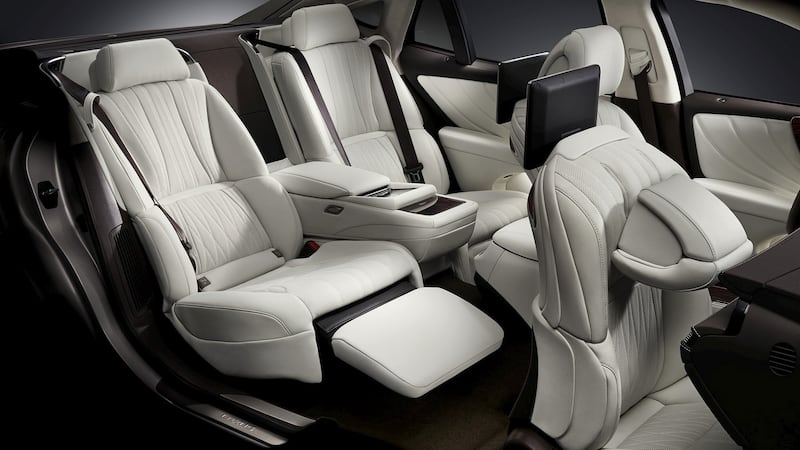
Then there are the massage functions, developed by Lexus in conjunction with experts in Shiatsu Japanese massage. Five separate 15 minute massage courses are available, including a "full body refresh". All these are performed while you enjoy the 23-speaker Mark Levinson audio system featuring Active Noise Control, which detects when engine noise enters the cabin and cancels out certain frequencies using antiphase sound from the speakers.
For those who drive, there are the same luxury touches, with a dash that’s largely taken from the firm’s recently launched luxury LC sports coupe. That means a smart digital screen but also Lexus’s silly touchpad control that’s far too fiddly to be functional. The car also shares much of its underpinnings with that car. Thanks to advances in hybrid technology, the LS also comes in either rear-wheel drive or all-wheel drive.
Diesel is dead
From the brand that recently announced "diesel is dead", it's hardly surprising the powertrain option for Ireland is hybrid. This matches a 3.5-litre V6 with tow electric motors and a lithium-ion battery pack, all is married to the firm's new 10-speed automatic transmission. The end result is a combined output of 354bhp, delivering a 0-100km/h time of 5.4 seconds for the front-wheel drive versions. For a car of this size that's very impressive.
Lexus claim a fuel economy as low as 6.2 l/100km (45.6mpg) for the rear-wheel drive version and 7 l/100km (40.3mpg) for the all-wheel drive. However, during our testing we did see our average climb as high as 12.1 l/100km (23.3mpg), which is hardly a clarion call for hybrid technology.
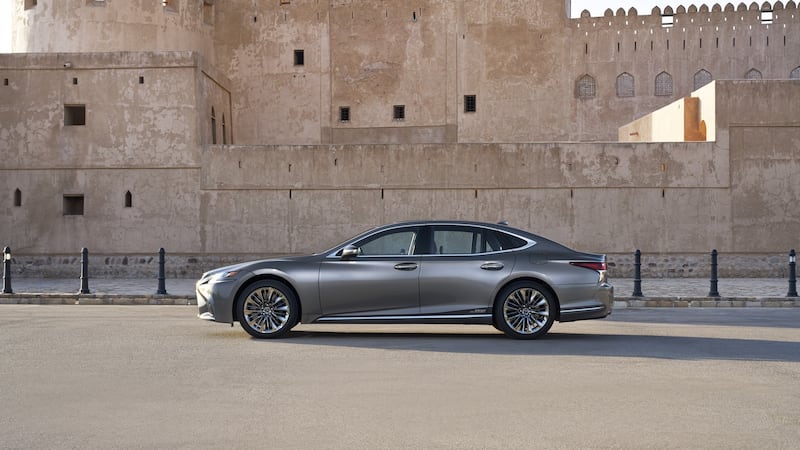
And yet ultimately the LS is not quite as impressive in the front seat as it is in the back. Even in so-called "Sport S" mode, the LS is best driven with a gentle touch on the throttle. Put your foot the floor and the same issues that arise with all hybrid systems start to show. There's a momentary lag in response and then a noticeable whine - despite the Active Noise Control system. According to Lexus engineers, it's largely down to the way we drive. It's something that doesn't arise in Japan, as motorists are more gradual on the accelerator pedal. Europeans, however, are more inclined to stomp on the throttle. It's something Lexus - and others - are continuing to address.
Ride quality
The ride quality is admirable, just what you expect on a €110,000-plus luxury liner. It’s also pretty sharp in terms of steering, though the German rivals still retain a lead in this regard. And in tight and testing bends, you do start to notice the car’s length.
There's still no plug-in option for the hybrid, which is a shame given the market trends and consumer interest in all things electric. There's an F Sport variant, but it's little more than window dressing and is not a supped-up rival to the likes of the BMW M760 or Mercedes S63 AMG.
It takes time to establish an identity. Five generations in and suddenly Lexus has a flagship that doesn’t look like a carbon copy of its German rivals.
When Toyota began its Lexus project back in 1983, the cynics were out in force, even within the firm. Six years of work by 1,400 engineers, and out rolled the first LS in 1989, the dawn of a new premium brand. Yet they might as well have offered a car with self-driving technology with maritime capabilities which ran on recycled urine. It was always going to be judged second best to the Germans.
The Lexus look
Not any more. The LS has, for the first time a look all its own. And it’s a metal tribute to the merits of attention to detail. Lexus has built this around what it refers to as Takumi craftsmanship. It basically marries engineering with handcrafts.
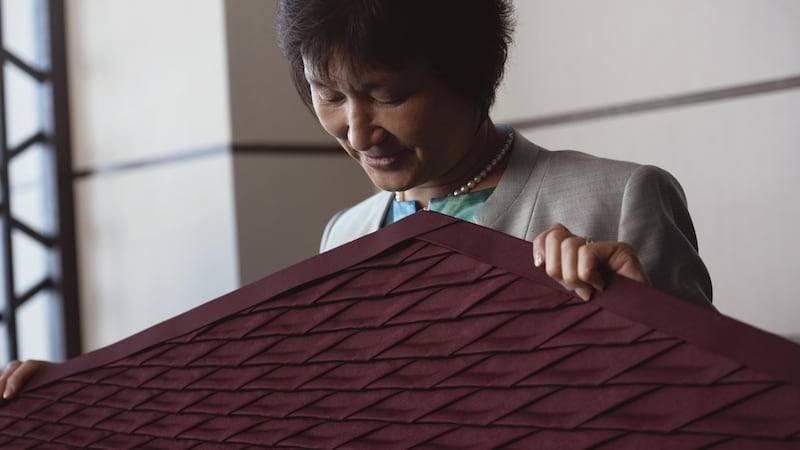
To become a Takumi-level engineer at Lexus requires a minimum of 25 years of experience and a fundamentalist attention to detail. For example, in the paint shop, Takumis are tested four times a year for their skill set and eyesight. One of the tests is ordering 20 samples of the same shade of colour in the correct sequence. Then there’s the Origami cat challenge. To maintain dexterity, they must perfectly complete a folded cat design in less than 90 seconds using their non-dominant hand. Silly perhaps, but it demonstrates an almost obsessive fixation on detail.
In the latest LS it is showcased in a few examples in the interior. Take the pleated leather on the door panels. The process of creating the three-dimensional pattern took four years to develop and can only be carried out by the human hand, requiring individual sheets of fabric to be expertly folded, like a sheet of paper. Origami cats seem relatively simple after this. These panels are surrounded by traditional Japanese Kiriko glass ornamentation.
Craftmanship
Then there is the spindle grille. When it first featured on concept show cars it was nothing short of a brobdingnagian monstrosity. Somehow, it has come to shine. It’s at the heart of the distinctive LC sports car’s styling. It defines much of the character of this car as well.
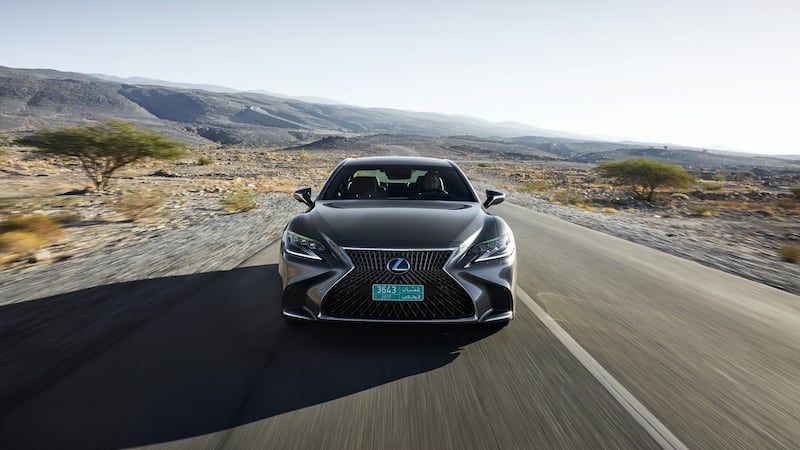
At first glance it may look like the work of a Leaving Cert tech drawing student practicing hyperbolic paraboloids, or spewed out by a computer algorithm. In reality it’s the work of craftsmen: 5,000 hand-drawn lines that took five months of work by the firm’s engineers.
So can this LS see off its German rivals? Ian Corbett, the newly appointed head of Lexus in Ireland, estimates 35 sales next year, impressive when you consider prices start at €112,750 after a €1,500 government rebate on hybrid cars. Incidentally, it does beg the question whether such tax discounts really should be granted to luxury cars, but that's a debate for another day.
Pricing
Even at €112,750 you don’t get the air suspension on the Executive grade: for that you need to opt for the €122,750 Luxury version, expected to make up 65 per cent of Irish sales. And if you want the business class cabin and legroom you need to opt for the Premium grade at €148,750.
To put the 35 Irish sales in context, BMW sold 75 of its 7 Series so far this year, Mercedes sold 70 S-Class and Audi saw 28 new A8s registered, though it did launch a new version towards the end of year that should push up its sales figure substantially in 2018.
The Lexus, therefore, remains something of an alternative niche purchase, a car for those who don't want to have yet another Teutonic behemoth crunching up the gravel driveway. The LS is arguably also up against the high-profile Tesla Model S, though it has little to fear from it in terms of refinement or driving ability. In fact the detailing on the LS merely serves to highlight the Model S's low-grade cabin quality.
German rivals
The ultimate goal of any car in this luxury class is to lure buyers away from the S-Class. Yet it's hard to see long-time Mercedes-Benz drivers abandoning the three-pointed star for this. And while Lexus claim its audience is early adopters, the reality is that many of these will be lured by the publicity of Tesla or the new Audi A8, which boasts a very impressive digital cabin, along with claims of cutting edge autonomous driving technology.
The problem for Lexus is that it’s not very far advanced on its own autonomous ambitions, certainly no further ahead than rivals. The same can be said of its parent, Toyota, which is a worrying situation for a firm that can rightly claim to have been a pioneer for hybrid technology.
Ultimately the luxury touches of the LS means that opting for this Lexus over its rivals carries little risk. Many of the original LS from 1989 are still on the road, working perfectly well. This is the pinnacle of quality Japanese engineering and the best alternative to the German brands.
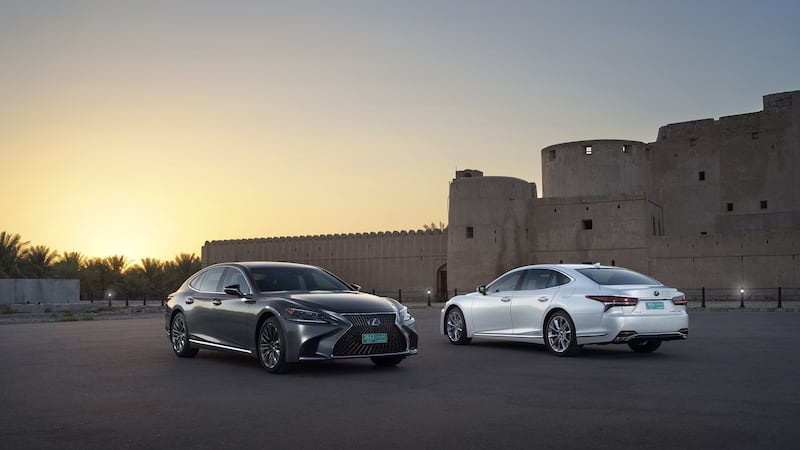
Certainly for those who are driven, the level of refinement is on a par with anything offered elsewhere. For those who drive, however, it’s still not a match with the Mercedes, which remains the Kaiser of the luxury classes.
Lowdown: Lexus LS
Engine: 3.5-litre V6 with two-electric motors and lithium-ion battery pack putting out 354bhp and 350Nm or torque
0-100km/h: 5.4 seconds
L/100km (mpg): 6.2 (45.6) for rear-wheel drive version on 19-inch alloys
Emissions (motor tax): 147 g/km (€390)
Prices: From €112,750 (after €1,500 hybrid rebate)
Specification: Entry-level Executive includes 12-speaker audio, 19ins alloys, adaptive variable coil suspension, moon roof, front-seat lumbar support, two-zone climate control, 8ins multi-information display, 12.3ins multimedia display, sat nav, Hill-start Assist Control, auto high beam, front/rear parking sensors, panoramic view monitor, Lexus Safety System, Pre-Crash Safety, Adaptive Cruise Control (ACC), lane keep assist/departure alert, road-sign assist. Luxury trim adds semi-aniline leather, rear heated/ventilated seats, 23-speaker Mark Levinson sound system, 20ins alloys, front seat massage, electric rear seats, suede roof lining, air suspension. F Sport adds to Executive: 20ins F SPORT alloys/radiator grille/accelerator pedal/shift leaver/ brake pedal, scuff plates and foot rest, leather, 23 speaker Mark Levinson sound system, heated steering wheel, suede roof lining, rear-seat heater, air suspension. Premium adds to Luxury 20ins alloys, Ottoman rear seats with extra legroom (1022 mm), rear DVD player and rear-seat massage.
Our rating: 3/5
Verdict: Luxury Lexus boasts incredible refinement and detailing and the best alternative to the German set









